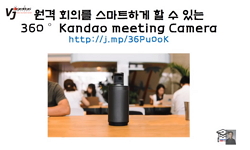Face is the important part of the human body structure that uniquely identifies a person. Therefore, it is used to trace identity as the possibilities for a face to deviate or being duplicated is low. Thus, using the face characteristics as biometric,...
http://chineseinput.net/에서 pinyin(병음)방식으로 중국어를 변환할 수 있습니다.
변환된 중국어를 복사하여 사용하시면 됩니다.
- 中文 을 입력하시려면 zhongwen을 입력하시고 space를누르시면됩니다.
- 北京 을 입력하시려면 beijing을 입력하시고 space를 누르시면 됩니다.
https://www.riss.kr/link?id=A107807009
- 저자
- 발행기관
- 학술지명
- 권호사항
-
발행연도
2021
-
작성언어
English
- 주제어
-
자료형태
학술저널
-
수록면
46-49(4쪽)
- 제공처
-
0
상세조회 -
0
다운로드
부가정보
다국어 초록 (Multilingual Abstract)
Face is the important part of the human body structure that uniquely identifies a person. Therefore, it is used to trace identity as the possibilities for a face to deviate or being duplicated is low. Thus, using the face characteristics as biometric, the face recognition system can be implemented. So in this paper we are proposing an automatic welcome monitoring system for family functions to enhance and upgrade the guest welcome system into more efficient and effective manner. By means of technology, this idea will resolve the flaws existed in the current system while bringing guest welcoming to a whole new level by automating most of the tasks. The technology working behind will be the face recognition system. From the footage captured by the camera, our system will detect the face and recognize the guest who is coming to function hall. Captured image of the guest coming to function get compared against the data we are having in our database. If match found, the system will display their image and welcome message on screen present in function. In short this upgraded version of guest welcoming system not only saves time, but also provides huge convenience to the person as many processes are automated.
목차 (Table of Contents)
- Abstract
- 1. Introduction
- 2. Working:
- 3. Result:
- 4. Conclusion:
- Abstract
- 1. Introduction
- 2. Working:
- 3. Result:
- 4. Conclusion:
- References
동일학술지(권/호) 다른 논문
-
- 한국디지털융합학회
- Eunhae Oh
- 2021
-
Xampp/PHP Website Optimization
- 한국디지털융합학회
- Rahul Thakur
- 2021
-
An Empirical Examination of Ubiquitous Business Adoption and Strategy
- 한국디지털융합학회
- Dae Wan Kim
- 2021
-
Data Lakes for Big Data and its Role in Current ICT
- 한국디지털융합학회
- Ajit Singh
- 2021




 eArticle
eArticle




